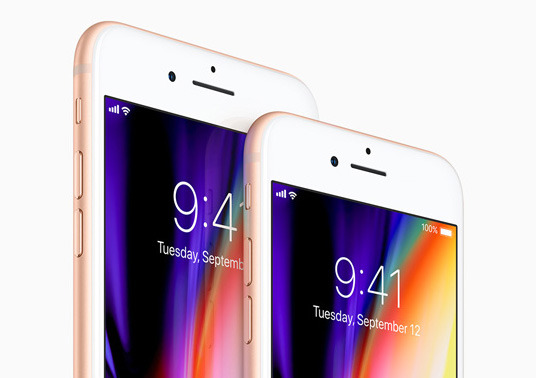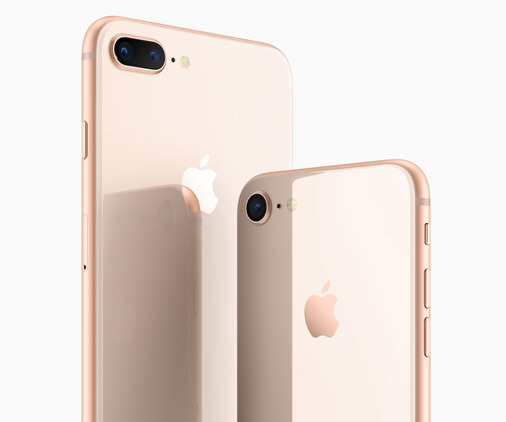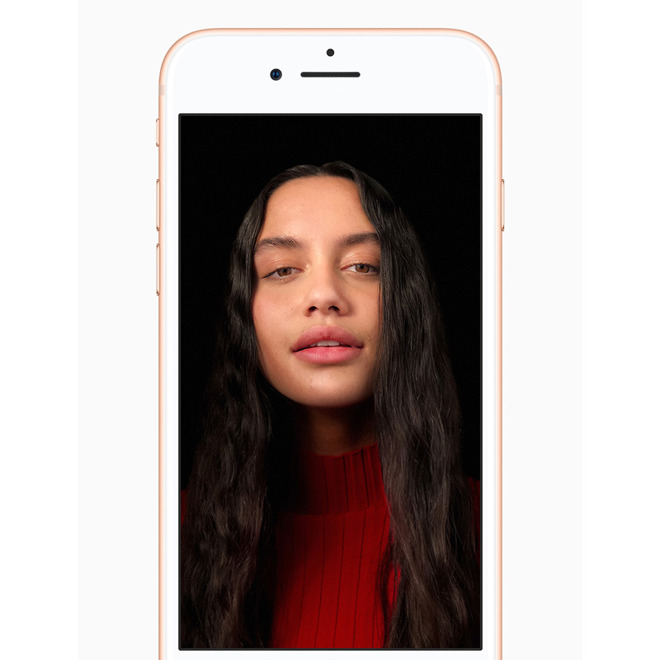Apple's iPhone 8 & iPhone 8 Plus - what are the differences?
With Apple's preorders now open, some people may still be on the fence about whether to get a regular iPhone 8, or spring for an iPhone 8 Plus -- here's what separates the two models.

In practice there should be little difference in sharpness, but screen area could be an important factor to consider. The Plus can show more icons on the homescreen, and should simply be more pleasant to use when reading websites or watching video. A relative handful of apps -- namely ones by Apple -- can take advantage of the extra space when the Plus rotates into landscape mode.
The regular iPhone 8 may be preferable for people who prefer to use their phone one-handed as much as possible, or for whom pocket space is at a premium.
The 4.7-inch phone has a single-lens, optically-stabilized 12-megapixel camera with a maximum f/1.8 aperture -- wider apertures allow more light and shallower depth-of-field. An accompanying quad-LED flash includes a new "Slow Sync" feature, which Apple claims should result in more consistent lighting.
To this the Plus adds an f/2.8 telephoto lens, which means that it can provide 2x optical zoom instead of just simulated 5x "digital" zoom. Digital zoom should be avoided whenever possible, since it simply crops and expands a part of the sensor image.
Another luxury of the Plus is Portrait mode, which artificially blurs the background behind a subject. A sub-feature, Portrait Lighting, adds simulated highlights, and can even drop out the background entirely.

In reality, of course, users are liable to switch between several tasks on any given day, but the gist is that the Plus is probably the best option for people who go long stretches away from a charging point, or who otherwise find their battery running dry
It's worth noting that both devices support Qi wireless, and can cable-charge to 50 percent in 30 minutes, albeit with costly accessories.
Both phones may be more affordable under the iPhone Upgrade Program, assuming you have a previous iPhone to trade in. Prices start at $34.50 and $39.50 per month, rising for more expensive models.
Preorders for the iPhone 8 and iPhone 8 Plus began earlier Friday, with new shipments already delayed until October in the face of demand.

Displays
The most obvious difference is size, since the standard iPhone 8 has a 4.7-inch screen, while the Plus scales up to 5.5 inches. But there's more -- the Plus has a 1080p display rated at 401 pixels per inch (ppi), whereas the smaller phone has a lower-resolution 1,334-by-750 panel, with 326 ppi.In practice there should be little difference in sharpness, but screen area could be an important factor to consider. The Plus can show more icons on the homescreen, and should simply be more pleasant to use when reading websites or watching video. A relative handful of apps -- namely ones by Apple -- can take advantage of the extra space when the Plus rotates into landscape mode.
The regular iPhone 8 may be preferable for people who prefer to use their phone one-handed as much as possible, or for whom pocket space is at a premium.
Cameras

The 4.7-inch phone has a single-lens, optically-stabilized 12-megapixel camera with a maximum f/1.8 aperture -- wider apertures allow more light and shallower depth-of-field. An accompanying quad-LED flash includes a new "Slow Sync" feature, which Apple claims should result in more consistent lighting.
To this the Plus adds an f/2.8 telephoto lens, which means that it can provide 2x optical zoom instead of just simulated 5x "digital" zoom. Digital zoom should be avoided whenever possible, since it simply crops and expands a part of the sensor image.
Another luxury of the Plus is Portrait mode, which artificially blurs the background behind a subject. A sub-feature, Portrait Lighting, adds simulated highlights, and can even drop out the background entirely.

Batteries
The iPhone 8 can theoretically handle up to 12 hours of internet access, 13 hours of video playback, 14 hours of talk time, and 40 hours of audio. The Plus extends these numbers to 13 hours of internet, 14 hours of video, 21 hours of talk, and 60 hours of audio.In reality, of course, users are liable to switch between several tasks on any given day, but the gist is that the Plus is probably the best option for people who go long stretches away from a charging point, or who otherwise find their battery running dry
It's worth noting that both devices support Qi wireless, and can cable-charge to 50 percent in 30 minutes, albeit with costly accessories.
Prices
A 64-gigabyte iPhone 8 will set you back about $699, and an equivalent Plus is $799. Still higher premiums are in effect for 256-gigabyte models, which cost $849 and $949 -- the second just $50 short of a 64-gigabyte iPhone X.Both phones may be more affordable under the iPhone Upgrade Program, assuming you have a previous iPhone to trade in. Prices start at $34.50 and $39.50 per month, rising for more expensive models.
Preorders for the iPhone 8 and iPhone 8 Plus began earlier Friday, with new shipments already delayed until October in the face of demand.

Comments
A little more digging and it is not mentioned that the 2x camera has the stabilization. So guess it does not.
differences are minor
not compelling enough
10X is worth waiting for
If the X is the future, Apple has implemented that future already in 8 series. And the 8 is available today.
https://www.macworld.com/article/3121661/apple-phone/blow-up-iphone-7-plus-uses-digital-zoom-instead-of-optical-more-often-than-youd-expect.html
I guess the 8 Plus is the same.